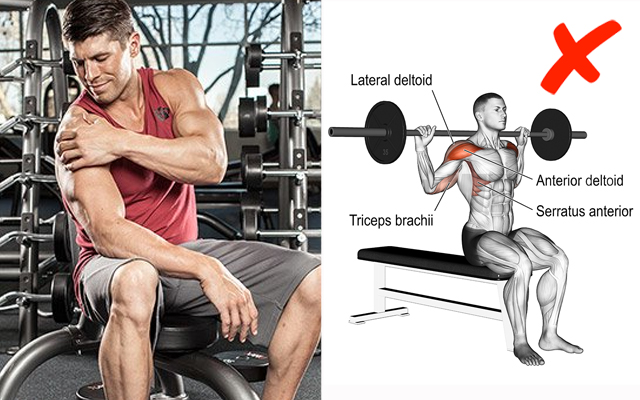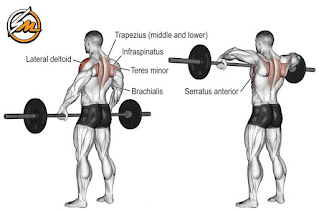Your shoulder joints have a high degree of flexibility. Your arms move in 180-degree arcs thanks to three separate delt heads. Because of the high level of intricacy, there is a higher chance of errors and injury. So pay attention as we go over the five most common delt-training mistakes and how to shoulder on properly. It's time for class.
5 Most Common Shoulder Training Mistakes
1: Straightening Your Arm on Lateral Raises
With a small bend in the elbow, practice lateral lifts to target the middle delt. When the elbow isn't locked during the movement, the problem emerges. Too often, you'll see guys who bend their arms to 90 degrees at the bottom then straighten them to 180 degrees at the top, especially when doing one arm at a time. Elbow extension is the action of straightening the arm, and it is performed by the triceps, not the deltoids. During execution, you are unable to open and close the elbow joint. Maintain a small bend in the handle.
2: Straightening Your Arm on Rear Delt Exercises
A similar elbow extension blunder frequently shows up in back-delt workouts, most notably bent-over lateral raises with dumbbells or cables. When you extend your elbow, you transform a good rear-delt workout into a triceps exercise. The goal here is to keep your arm in a slightly bent position throughout the exercise. If you're having trouble, try the reverse flye on the pec-deck machine, which demands you to maintain a slight bed throughout the workout.
3: Positioning Your Hands Too Close on Upright Rows
During upright rows, your upper arms should go out to the sides to target your middle delts. When you utilize a close grip, however, this is not the case. As your shoulders are internally rotated, your elbows are brought forward. That kind of motion isn't good for your shoulder joints. Your elbows may kick out high and wide with a considerably broader grip (hands around shoulder-width apart), which is ideal for hitting your middle delts. (The front delts also receive a workout.) Even if you want to spice up your workout, skip the close-grip variant.
4: Neglecting Your Rotator-Cuff Muscles
Sure, you want broad shoulders, which implies focusing on the front, middle, and back delts with workouts. A smaller group of four rotator cuff muscles, on the other hand, work together to assist stabilize your shoulder joint (and that includes during presses for the chest). If you don't train your rotator cuff muscles at the same time as your delts, a strength imbalance develops, making the rotators more prone to injury and persistent pain. It may not look remarkable to do particular rotator-cuff practice using extremely light dumbbells, cables, and bands, but it's necessary for long-term pain-free training.
5: Going Very Heavy With Behind-the-Neck Presses
It's not a mistake to use a lot of pressure on your presses. That's how you develop shoulder size and strength. Stick with pushes that lower the bar to the front of your head if you're utilizing max weights for extremely low reps. "When you lower the bar, the deltoids are stretching to a completely extended posture, but they're also at their weakest," says Guillermo Escalante, DSc, CSCS, an amateur bodybuilder and sports-medicine doctor. When the shoulder is abducted and externally rotated, it poses the greatest risk of injury in any sport. "Loading up a tremendous amount of weight is a surefire way to destroy something." While the joints of some younger bodybuilders may be more robust, the risk is significant for many others. If you're doing behind-the-neck presses, keep the weights light.










.jpg)
0 Comments